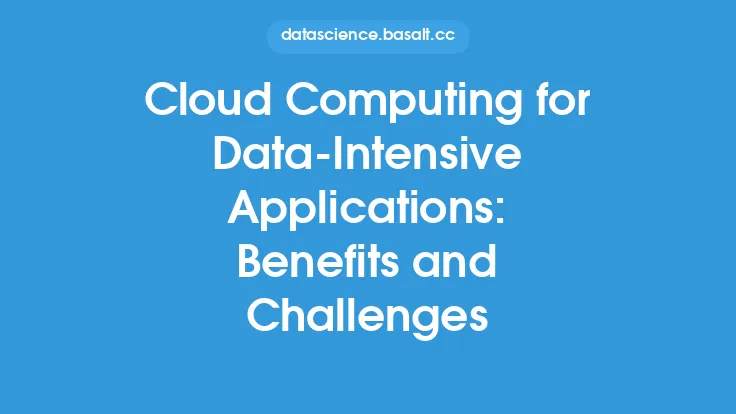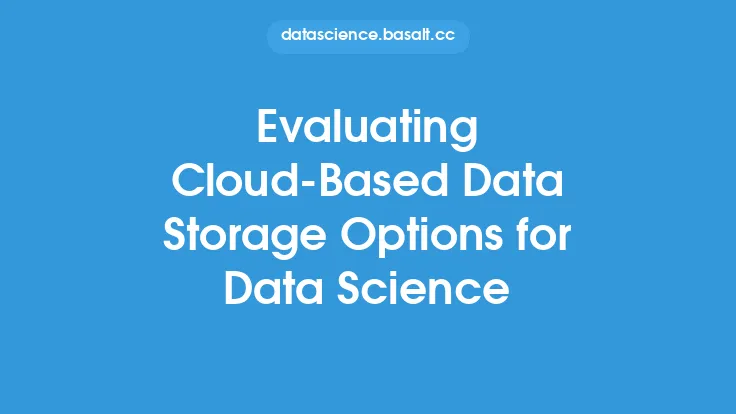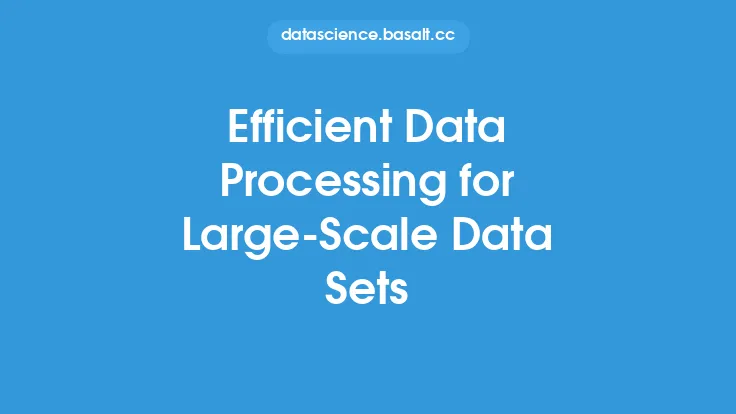The increasing reliance on cloud computing has led to a growing concern about the security of data stored in the cloud. As more organizations move their data and applications to the cloud, the risk of data breaches and cyber-attacks also increases. Therefore, it is essential to implement robust data security measures to protect sensitive information from unauthorized access, use, disclosure, disruption, modification, or destruction. In this article, we will discuss the various data security measures that can be taken to ensure the confidentiality, integrity, and availability of data in cloud computing.
Introduction to Cloud Security
Cloud security refers to the practices, technologies, and controls designed to protect cloud computing environments, data, and applications from cyber threats and vulnerabilities. Cloud security is a shared responsibility between the cloud service provider (CSP) and the customer. The CSP is responsible for securing the cloud infrastructure, while the customer is responsible for securing their data and applications. To ensure the security of data in the cloud, it is essential to understand the different cloud deployment models, including public, private, and hybrid clouds, as well as the various cloud service models, including Infrastructure as a Service (IaaS), Platform as a Service (PaaS), and Software as a Service (SaaS).
Data Encryption and Key Management
Data encryption is a critical security measure that protects data from unauthorized access. Encryption converts plaintext data into unreadable ciphertext, making it inaccessible to unauthorized users. In cloud computing, data encryption can be applied at various levels, including data at rest, data in transit, and data in use. To ensure the security of encrypted data, it is essential to implement a robust key management system. Key management involves generating, distributing, storing, and managing encryption keys. A good key management system should include features such as key generation, key storage, key rotation, and key revocation.
Access Control and Identity Management
Access control and identity management are essential security measures that ensure only authorized users have access to cloud resources and data. Access control involves granting or denying access to cloud resources based on user identity, role, and permissions. Identity management involves managing user identities, including user authentication, authorization, and accounting (AAA). In cloud computing, access control and identity management can be implemented using various technologies, including multi-factor authentication, single sign-on, and role-based access control.
Cloud Storage Security
Cloud storage security refers to the practices and technologies designed to protect data stored in cloud storage systems. Cloud storage systems, such as Amazon S3, Microsoft Azure Blob Storage, and Google Cloud Storage, provide a scalable and on-demand storage solution for organizations. However, cloud storage systems are also vulnerable to cyber threats and data breaches. To ensure the security of data stored in cloud storage systems, it is essential to implement security measures such as data encryption, access control, and data backup and recovery.
Network Security
Network security is a critical component of cloud security that protects cloud resources and data from network-based threats. Network security involves implementing security measures such as firewalls, intrusion detection and prevention systems, and virtual private networks (VPNs). In cloud computing, network security can be implemented using various technologies, including software-defined networking (SDN) and network functions virtualization (NFV).
Compliance and Governance
Compliance and governance are essential aspects of cloud security that ensure cloud computing environments and data are compliant with relevant laws, regulations, and industry standards. Compliance involves ensuring that cloud computing environments and data meet the requirements of relevant laws and regulations, such as the General Data Protection Regulation (GDPR) and the Health Insurance Portability and Accountability Act (HIPAA). Governance involves managing cloud computing environments and data to ensure they are aligned with organizational policies and procedures.
Cloud Security Architecture
A cloud security architecture is a framework that provides a comprehensive and structured approach to cloud security. A cloud security architecture should include various components, such as security controls, security protocols, and security technologies. Security controls involve implementing security measures such as access control, data encryption, and network security. Security protocols involve implementing security protocols such as Secure Sockets Layer/Transport Layer Security (SSL/TLS) and Internet Protocol Security (IPSec). Security technologies involve implementing security technologies such as cloud access security brokers (CASBs) and cloud security gateways (CSGs).
Best Practices for Cloud Security
To ensure the security of cloud computing environments and data, it is essential to follow best practices for cloud security. Best practices for cloud security include implementing a cloud security architecture, conducting regular security assessments and risk analyses, and providing cloud security training and awareness programs. Additionally, organizations should implement a cloud security incident response plan to respond to cloud security incidents and data breaches.
Conclusion
In conclusion, data security measures are essential to protect sensitive information from unauthorized access, use, disclosure, disruption, modification, or destruction in cloud computing. By implementing robust data security measures, such as data encryption, access control, and network security, organizations can ensure the confidentiality, integrity, and availability of data in cloud computing. Additionally, organizations should follow best practices for cloud security, including implementing a cloud security architecture, conducting regular security assessments and risk analyses, and providing cloud security training and awareness programs. By taking a proactive and comprehensive approach to cloud security, organizations can minimize the risk of data breaches and cyber-attacks and ensure the security and integrity of their data in the cloud.





